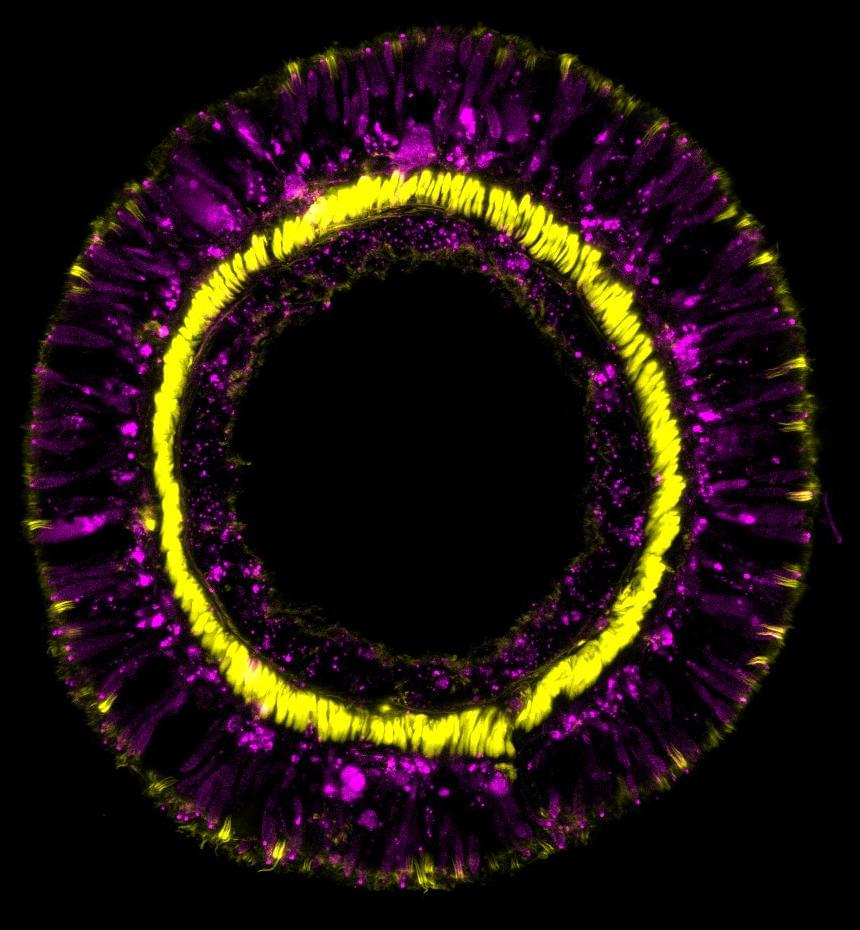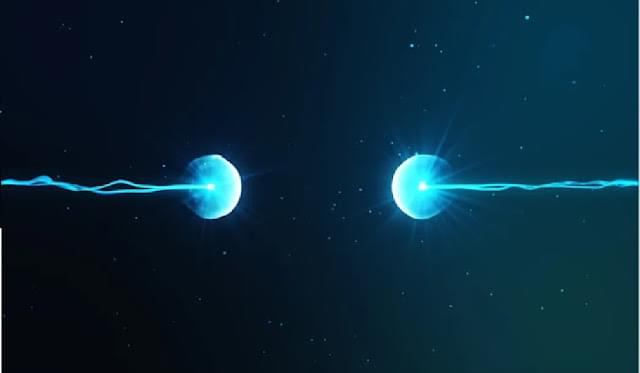At Connect 2022, Facebook-turned-Meta Mark Zuckerberg and a fellow metaverse exec both appeared as their new, legged avatars. But only they had legs.
Get the latest international news and world events from around the world.

Oakland Police Want to Arm Robots With Shotguns, Because We Live in a Dystopian Nightmare
Police in Oakland are hoping to arm robots with potentially lethal shotgun-like attachments. Why? Because that’s the reality we live in now.
As The Intercept reports, the Oakland police force made a “percussion actuated nonelectric disruptor,” or PAN disruptor, a top-priority item on their wish list last year.
In short, PAN is a shotgun-shaped accessory attachment for wheeled robots, which are often deployed in war zones and by bomb squads.


Huge Hidden Galactic Structure Found In The Zone of Avoidance Behind Milky Way
Get a Wonderful Person Tee: https://teespring.com/stores/whatdamath.
More cool designs are on Amazon: https://amzn.to/3wDGy2i.
Alternatively, PayPal donations can be sent here: http://paypal.me/whatdamath.
Hello and welcome! My name is Anton and in this video, we will talk about a discovery of a huge galactic structure behind the Milky Way in the hidden Zone of Avoidance.
Links:
https://arxiv.org/pdf/2210.16332.pdf.
https://en.wikipedia.org/wiki/Zone_of_Avoidance.
Great attractor mystery: https://youtu.be/xAS-IoKLddU
Great debate: https://youtu.be/kcKOV7IwlNc.
#zoneofavoidance #milkyway #mystery.
Support this channel on Patreon to help me make this a full time job:
https://www.patreon.com/whatdamath.
Bitcoin/Ethereum to spare? Donate them here to help this channel grow!
bc1qnkl3nk0zt7w0xzrgur9pnkcduj7a3xxllcn7d4
or ETH: 0x60f088B10b03115405d313f964BeA93eF0Bd3DbF
Space Engine is available for free here: http://spaceengine.org.
Enjoy and please subscribe.
Twitter: https://twitter.com/WhatDaMath.


What is the shape of the universe?
The universe may seem shapeless because it is so vast, but it does have a form that astronomers can observe. So, what is it shaped like?
Physicists think the universe is flat. Several lines of evidence point to this flat universe: light left over from the Big Bang, the rate of expansion of the universe at different locations, and the way the universe “looks” from different angles, experts told Live Science.

Forever Young: Scientists Reveal the Secret to a Strange Animal’s Eternal Youth
Sea anemones are seemingly immortal animals. They seem to be immune to aging and the negative impacts that humans experience over time. However, the exact reasons for their eternal youth are not completely understood.
The genetic fingerprint of the sea anemone Nematostella vectensis reveals that members of this incredibly ancient animal phylum employ the same gene cascades for neural cell differentiation as more complex organisms. These genes are also in charge of maintaining the balance of all cells in the organism during the anemone’s lifetime. These findings were recently published in the journal Cell Reports by a group of developmental biologists headed by Ulrich Technau of the University of Vienna.
Almost all animal organisms are made up of millions, if not billions, of cells that join together in intricate ways to create specific tissues and organs, which are made up of a range of cell types, such as a variety of neurons and gland cells. However, it is unclear how this critical balance of diverse cell types emerges, how it is regulated, and if the different cell types of different animal organisms have a common origin.
New Technologies that May be in the Cards
Visit our sponsor, Brilliant: https://brilliant.org/IsaacArthur/
Every day brings us new technological advances, today we’ll explore many of those of such as robotics, automation, rapid delivery, education, medical science, nanotechnology, and more.
Episodes referenced in the Episode:
Power Satellites: https://www.youtube.com/watch?v=eBCbdThIJNE
Fusion Power: https://www.youtube.com/watch?v=ChTJHEdf6yM
Quiet Revolution: https://www.youtube.com/watch?v=jvH-7XX6pkk.
The Santa Claus Machine: https://www.youtube.com/watch?v=FmgYoryG_Ss.
Synthetic Meat: https://www.youtube.com/watch?v=_NULFAItoBs.
Cyborgs: https://www.youtube.com/watch?v=cGYKCTFIZLI
Mind Augmentation: https://www.youtube.com/watch?v=aQpYOVvU17Y
Mind-Machine Interfaces: https://www.youtube.com/watch?v=OCLLzI4R3bc.
Life Extension https://www.youtube.com/watch?v=kKmdc2AuXec.
The Science of Aging: https://www.youtube.com/watch?v=RDpjv2z3dyE
Happily Ever After: https://www.youtube.com/watch?v=0ypfzvQ-Q2w.
Attack of the Drones: https://www.youtube.com/watch?v=6oZCUtgnQkE
Advanced Metamaterials: https://www.youtube.com/watch?v=s0UZ6-oeiIE
Portable Power: https://www.youtube.com/watch?v=ffXqcf48D9Q
The Nuclear Option: https://www.youtube.com/watch?v=3aBOhC1c6m8
Moon: Industrial Complex: https://www.youtube.com/watch?v=y47MMNqKGxE
Machine Rebellion: https://www.youtube.com/watch?v=jHd22kMa0_w.
The Paperclip Maximizer: https://www.youtube.com/watch?v=3mk7NVFz_88
Technological Stagnation: Coming Soon.
Non-Carbon Based Life: Coming Soon.
Visit our Website: http://www.isaacarthur.net.
Support us on Patreon: https://www.patreon.com/IsaacArthur.
SFIA Merchandise available: https://www.signil.com/sfia/
Social Media:
Facebook Group: https://www.facebook.com/groups/1583992725237264/
Reddit: https://www.reddit.com/r/IsaacArthur/
Twitter: https://twitter.com/Isaac_A_Arthur on Twitter and RT our future content.
SFIA Discord Server: https://discord.gg/53GAShE
Listen or Download the audio of this episode from Soundcloud: Episode’s Audio-only version: https://soundcloud.com/isaac-arthur-148927746/new-technologi…-the-cards.
Episode’s Narration-only version: https://soundcloud.com/isaac-arthur-148927746/new-technologi…ation-only.
Credits:

Scientists Discover The “Angel Particle” Which Is Both Matter And Antimatter At The Same Time
Scientists have discovered proof of a strange particle that strangely enough is also its own antiparticle. Even though it was initially postulated 80 years ago, it now seems that it just could be true.
Scientists from the University of California and Stanford University in California performed the research that was published in the journal Science. A particle might have its own antiparticle, according to a notion initially put out in 1937 by Italian scientist Ettore Majorana (who suddenly vanished in 1938). According to him, certain particles in the fermion class, which includes protons, electrons, and neutrons, ought to have unique antiparticles. These particles later came to be known as Majorana particles.
A particle with the same mass as a normal particle but the opposite electric or magnetic properties is said to be an antiparticle. The positron, for instance, is the antiparticle of the electron. If the two come into contact, they destroy one another.